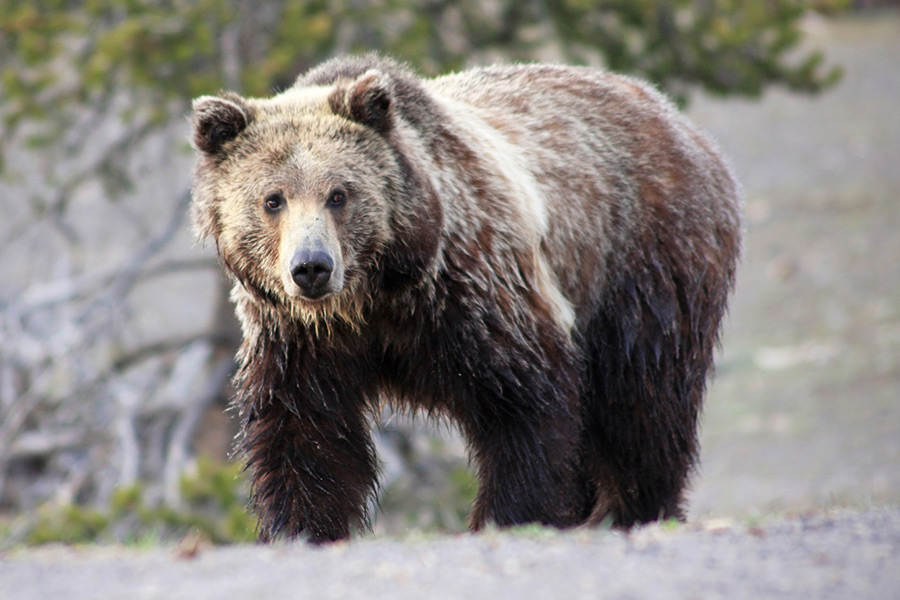A complex blueprint to steer the continued recovery of grizzly bears roaming the Northern Continental Divide Ecosystem, home to the largest population of the species in the Lower 48, received a mixed reception when the Interagency Grizzly Bear Committee trotted it out for public review last week.
Initially slated for a vote on whether to endorse the strategy, committee members decided to stop short of that at their June 19 meeting in an effort to allow additional time for the public to review the 327-page handbook for transferring grizzly bears from federal to state management, made available days earlier.
It’s a sprawling, comprehensive conservation strategy that incorporates input from a multitude of agencies, researchers and stakeholders, the thrust of whose input seeks to sustain the species’ recovery and delist grizzlies from the federal Endangered Species Act in the Northern Continental Divide Ecosystem (NCDE).
According to estimates by biologists based on years of data and evolving population assessment techniques, the rugged chunk of mountainous country that runs from the Canadian border down to Glacier National Park and the Bob Marshall Wilderness Area, tracking through portions of five national forests and two reservations, is inhabited by more than 1,000 grizzly bears.
“We have believed this population has likely met the demographic recovery goals for many years now,” Hillary Cooley, U.S. Fish and Wildlife Service (USFWS) grizzly bear recovery coordinator and an advisor to the Interagency Grizzly Bear Committee (IGBC), said recently. “We’ve met our recovery goal and we’re probably well above it, so this is a good time to start evaluating it formally.”
Grizzly bears were listed as threatened under the U.S. Endangered Species Act in 1975, but they are believed to be recovering, particularly the populations in distinct regions — the NCDE and the Greater Yellowstone Ecosystem. Last year, federal officials announced the decision to remove grizzly bears from the Greater Yellowstone Ecosystem, ending management of the species under USFWS.
Still, the proposal to delist grizzly bears remains highly controversial, particularly the proposal to include a grizzly hunt, which environmental groups and tribal leaders oppose.
Tribal biologists with both the Confederated Salish and Kootenai Tribes and the Blackfeet Nation have questioned the brisk pace of the actions to move toward delisting, cautioning the committee to take its time.
Officials with Montana Fish, Wildlife and Parks, the agency tasked with most management responsibilities surrounding grizzlies, including responding to bear-human conflicts, will hold an upcoming administrative rule review of Chapter 2 in the conservation strategy, which centers on bear demographic monitoring and species management, intended to ensure sustained recovery and genetic diversity.
The conservation strategy also identifies the goal of maintaining demographic and genetic connections with Canadian populations and providing the opportunity for genetic connectivity with other ecosystem, such as the Cabinet-Yaak, Bitterroot and Greater Yellowstone.
“The key to successful management of grizzly bears is to balance multiple land uses, public safety, and careful consideration of grizzly bear needs across northwest Montana,” Jeff Mow, superintendent of Glacier National Park and the chair of the NCDE Subcommittee, stated in an announcement unveiling the strategy.
One key objective outlined in the conservation strategy is to “manage mortalities from all sources to support a 90 percent or greater estimated probability that the grizzly bear population within a designated monitoring area remains above 800 bears. Given the complicated business of counting bear populations, the objective seeks to maintain an actual population size closer to 1,000 bears, “and an even higher population size should uncertainty increase,” according to a statement from the IGBC.
Other agencies and stakeholders with a final say in the conservation strategy are the state Department of Natural Resources and Conservation; the Blackfeet Nation; the Confederated Salish and Kootenai Tribes; Glacier National Park; the U.S. Fish and Wildlife Service; U.S. Geological Survey; and the Bureau of Land Management.
Conservationists who oppose removing federal protections for Glacier-area grizzlies want the new plan to more tightly restrict the number of allowable grizzly deaths each year, and insist in a transparent public process.
Keith Hammer, chair of the locally based Swan View Coalition, remains firmly opposed to the delisting of grizzlies, particularly due to the inevitable debut of a hunting season. Hammer said persistent population growth and development has placed an “unrelenting pressure” on grizzles and their habitat, which he said deserves more connectivity to promote genetic diversity.
He said the government agencies were effectively shutting the public out of decisions that could lead to removal of federal protections for grizzlies in the NCDE.
“Fish and Wildlife Service in 2016 promised a public review of the revised Conservation Strategy,” Hammer said prior to the meeting and the release of the strategy. “Now that the strategy is done it won’t even give us a copy, let alone time to review and comment on it prior to its approval by the IGBC, scheduled for next week.”
Development of the Conservation Strategy began in 2009. In 2013, although not required to do so, the agencies agreed to release a draft of the Conservation Strategy and the USFWS opened a 60-day public comment period via a notice of availability published in the Federal Register. Over 2,400 comments and three peer reviews were received.
To read a copy of the proposed strategy’s most recent revision, visit igbconline.org.
